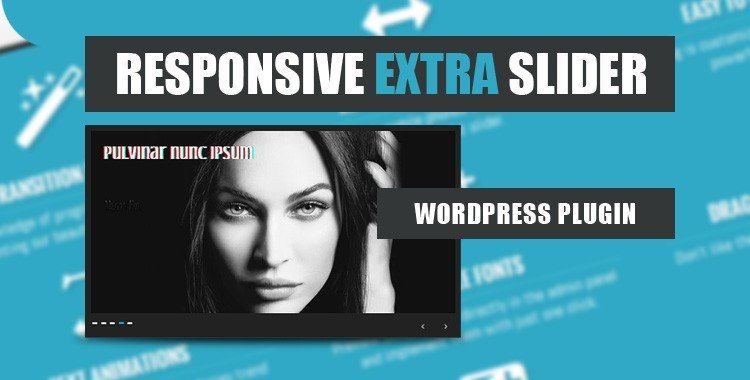Are you ready to embark on an exciting blogging adventure? Imagine starting your very own WordPress blog on Bluehost in just 30 minutes!
No prior experience is required. Sounds impressive, right? Well, get ready to make it happen because I’ve got a step-by-step tutorial that will easily guide you through the process. Whether you’re a total newbie or someone hesitant to dive into the world of blogging, this tutorial is for you. I’ve been in your shoes, feeling overwhelmed and unsure, but trust me, I’ve got your back.
By the end of this post, you’ll have a solid technical setup for your blog that will last for years to come.

So, please grab a cup of coffee, and let’s start this exciting journey together!
Why Choose Bluehost for Your WordPress Blog?
Bluehost is the perfect hosting provider for your WordPress blog. With its reliable hosting services, seamless WordPress integration, and user-friendly interface, Bluehost makes starting and managing your blog a breeze.
Bluehost’s Reliable Hosting Services
When it comes to hosting your WordPress blog, reliability is critical. Bluehost guarantees a 99.9% uptime, ensuring that your blog is accessible to your readers at all times. With their robust servers and advanced infrastructure, you can trust Bluehost to keep your blog running smoothly without frustrating downtime.
Bluehost’s WordPress Integration
Bluehost has a strong partnership with WordPress, the world’s most popular content management system. As a result, Bluehost offers seamless integration with WordPress, allowing you to easily install and set up your blog with just a few clicks. No technical expertise is required – Bluehost takes care of the backend details, so you can focus on creating fantastic content for your readers.
Bluehost’s User-Friendly Interface
Setting up and managing a blog can be overwhelming, especially for beginners. That’s why Bluehost provides a user-friendly interface that simplifies the process. With their intuitive control panel, you can effortlessly navigate different settings, install plugins, customize themes, and perform other essential tasks without hassle. Bluehost’s interface is designed with you in mind, ensuring a smooth blogging experience from start to finish.
Now that you know why Bluehost is the ideal choice for your WordPress blog, it’s time to take the following steps. In the upcoming sections, we will explore how to select the best blog hosting, register a custom domain name, and install and set up your WordPress blog. Stay tuned for the exciting journey ahead!

Preparations Before Starting Your Blog
Congratulations on taking the first step towards starting your very own WordPress blog on Bluehost! Before diving into the exciting world of blogging, you need to make a few essential preparations. This section covers everything from choosing a domain name to setting up WordPress on Bluehost. So, let’s get started!
Choosing a Domain Name

First, let’s talk about choosing a catchy and memorable domain name for your blog. Your domain name is like your digital address, so it’s essential to pick one that reflects your blog’s topic and resonates with your target audience.
When brainstorming ideas, think about what makes your blog unique. Consider using keywords related to your niche to help improve your blog’s visibility in search engine results. Avoid using numbers or hyphens, as they can make your domain name harder to remember.
Once you have a few options, head to a domain registrar like Bluehost to check if your desired domain name is available. If it is, congratulations! If not, don’t worry – get creative and try variations until you find the perfect available domain name.
Signing Up for Bluehost
 Gray and Black Galaxy Wallpaper (Photo by Pixabay)
Gray and Black Galaxy Wallpaper (Photo by Pixabay)
Now that you have chosen your domain name, it’s time to sign up for a hosting provider. Bluehost is a popular and reliable hosting platform that offers excellent features specifically designed for WordPress blogs.
To get started, visit the Bluehost website and click the “Get Started” button. You’ll then be prompted to select a hosting plan. If you’re starting, the Basic plan should be sufficient. Remember, you can always upgrade later as your blog grows.
Once you’ve chosen your plan, you’ll be asked to enter your domain name. If you already have a domain name, enter it in the appropriate field. If not, you can register a new domain name with Bluehost.
Next, fill in your account information, choose any additional features you’d like (such as domain privacy), and select the duration of your hosting plan. The longer the plan, the more cost-effective it is in the long run.
Finally, enter your payment details, review your order, and hit the “Submit” button. Congratulations, you’re now a proud Bluehost user!
Installing WordPress on Bluehost
 Aurora Borealis (Photo by Frans van Heerden)
Aurora Borealis (Photo by Frans van Heerden)
With your Bluehost account all set up, it’s time to install WordPress. Fortunately, Bluehost makes this process incredibly simple with its one-click WordPress installation feature.
You’ll be greeted with the Bluehost dashboard once you’ve logged in to your Bluehost account. Look for the “Website” section and click the “Install WordPress” button. Follow the step-by-step instructions provided, and your WordPress installation will be complete within minutes.
After installation, you can access your WordPress dashboard by visiting your domain name, followed by “/wp-admin.” Here, you can customize your blog’s appearance, create new posts, and share your thoughts with the world.
That’s it for the preparations before starting your blog on Bluehost. Now that you have your domain name, hosting, and WordPress all setup, you’re ready to embark on your blogging journey. In the following sections, we’ll dive deeper into customizing your blog’s design and creating compelling content. Stay tuned!
Designing Your Blog
Congratulations on taking the first steps towards starting your WordPress blog on Bluehost! It’s time to unleash your creativity and design a blog that reflects your unique style and personality. This section’ll cover the essential steps to help you design your blog and make it visually appealing.
Selecting a WordPress Theme
When designing your blog, choosing the suitable WordPress theme is crucial. A theme determines your blog’s overall look and layout, so it’s essential to select one that aligns with your content and goals.
Here are a few key factors to consider when selecting a theme:
- Design: Opt for a theme that matches your niche and appeals to your target audience. Whether you prefer a clean and minimalist design or a bold and vibrant layout, there’s a theme for everyone.
- Responsiveness: With mobile internet usage on the rise, it’s essential to choose a responsive theme that automatically adjusts to different screen sizes. This ensures that your blog looks great on smartphones, tablets, and desktops.
- Customization Options: Look for a theme that offers customization options, allowing you to tweak colors, fonts, and layouts to make it truly yours.
- User Reviews: Consider checking user reviews and ratings to get an idea of the theme’s performance, reliability, and support.
Remember, your theme sets the foundation for your blog’s visual identity, so take your time exploring different options until you find the perfect fit.
Customizing Your Blog’s Appearance
Now that you’ve selected a theme, it’s time to customize your blog’s appearance and make it uniquely yours. WordPress offers a range of customization options to help you achieve the desired look and feel. Here are a few customization tasks to get you started:
- Logo and Branding: Upload your blog’s logo and customize the colors and fonts to match your branding.
- Header and Footer: Customize the header and footer sections to include essential elements, such as navigation menus, social media icons, and copyright information.
- Widgets and Sidebars: Take advantage of WordPress widgets to add useful elements to your blog’s sidebars, such as a search bar, recent posts, or social media feeds.
- Background and Colors: Experiment with different background images or colors to enhance your blog’s visual appeal.
Remember, the goal is to create a visually pleasing and user-friendly blog that captivates your audience and keeps them coming back for more.
Adding Essential Plugins
In addition to the visual design, plugins play a significant role in enhancing the functionality of your WordPress blog. Plugins are like little tools that add extra features and capabilities to your site. Here are a few essential plugins to consider installing:
- Yoast SEO: Boost your blog’s search engine visibility with this powerful SEO plugin. It helps you optimize your content for better rankings and provides valuable insights for improving your on-page SEO.
- Akismet: Protect your blog from spam comments by installing Akismet. It filters out potential spam comments, saving you time and maintaining the integrity of your blog’s comment section.
- Jetpack: Supercharge your blog with Jetpack, a comprehensive plugin that offers various features like website security, performance optimization, site analytics, and social media sharing.
- Contact Form 7: Allow your readers to get in touch with you easily by adding a simple and customizable contact form using Contact Form 7.
Remember, while plugins can enhance your blog’s functionality, it’s essential to choose and install only the ones you truly need. Too many plugins can slow down your site and affect user experience.
That wraps up this section on designing your blog. Now that you know how to select a WordPress theme, customize your blog’s appearance, and add essential plugins, your blog is well on its way to becoming a visually stunning and fully functional online platform. In the next sections, we’ll dive deeper into other aspects of starting a WordPress blog, so stay tuned!

Creating Compelling Content
So, you’ve set up your WordPress blog on Bluehost, but now it’s time to create compelling content that will engage your readers and keep them coming back for more. This section’ll discuss three important steps to help you create content that will captivate your audience: defining your blog’s niche, conducting keyword research, and writing engaging blog posts.
Defining Your Blog’s Niche
Before you start writing, defining your blog’s niche is crucial. A niche is simply a specific area or topic that your blog will focus on. By narrowing down your niche, you can target a specific audience and establish yourself as an authority in that field.
To define your blog’s niche, ask yourself these questions:
- What are your passions and interests?
- What topics are you knowledgeable about or eager to learn more about?
- Who is your target audience and what kind of content would they find valuable?
You can identify a niche that aligns with your expertise and resonates with your target audience by answering these questions. This will help you create content that is both unique and appealing.
Conducting Keyword Research
Once you have defined your blog’s niche, it’s time to conduct keyword research. Keywords are the search terms people use to find information online. Incorporating relevant keywords into your blog posts can improve your visibility in search engine results and attract more organic traffic.
Start by brainstorming a list of keywords related to your niche. Then, use keyword research tools like Google Keyword Planner, SEMrush, or Moz Keyword Explorer to analyze each keyword’s search volume and competition.
Look for keywords with a high search volume and low competition. These are often referred to as “long-tail” keywords and can be easier to rank for. Incorporate these keywords naturally into your blog posts to increase your chances of ranking higher in search results.
Writing Engaging Blog Posts
Now that your niche and keywords are in mind, it’s time to start writing engaging blog posts. Here are some tips to make your content stand out:
- Be informative and practical: Provide valuable information that your readers can use and apply in their lives. Offer solutions to their problems or answer their questions.
- Tell stories: Capture your readers’ attention by incorporating personal anecdotes or relatable stories. This helps create an emotional connection and makes your content more engaging.
- Use visuals: Include relevant images or graphics to break up your text and make your blog posts visually appealing. Images not only grab attention but also enhance the overall reading experience.
- Write in a conversational tone: Avoid using overly formal language and connect with your readers by writing as if you’re having a conversation with them. This makes your content more relatable and accessible.
- Include actionable takeaways: At the end of each blog post, provide actionable steps or key takeaways that readers can implement. This encourages interaction and allows them to apply what they’ve learned.
Remember, the goal is to create content that resonates with your audience, provides value, and keeps them coming back for more. By defining your blog’s niche, conducting keyword research, and writing engaging blog posts, you’re taking important steps towards building a successful WordPress blog on Bluehost.
Now that you have a solid understanding of how to create compelling content, it’s time to dive into the next section – promoting your blog and driving traffic to your site. Stay tuned for more valuable insights and strategies to make your blog a success!

Promoting Your Blog
So, you’ve successfully started your WordPress blog on Bluehost and now it’s time to get the word out! Promoting your blog is crucial to attract readers and increase your online presence. In this section, we’ll discuss three effective strategies to promote your blog: implementing SEO strategies, leveraging social media platforms, and building an email list.
Implementing SEO Strategies
Implementing SEO (Search Engine Optimization) strategies will help your blog rank higher in search engine results and drive organic traffic to your site. Here are some key steps to optimize your blog for search engines:
- Keyword Research: Conduct thorough keyword research to identify relevant keywords and phrases related to your blog niche. Use tools like Google Keyword Planner or SEMRush to find popular and low competition keywords.
- On-Page Optimization: Optimize your blog posts by strategically placing your target keywords in the title, headings, meta descriptions, and throughout the content. Ensure your blog has a user-friendly URL structure and use descriptive alt tags for images.
- Quality Content: Focus on creating high-quality, engaging, and informative content that provides value to your readers. Google values well-written and relevant content, so make sure to include relevant keywords naturally within your articles.
Leveraging Social Media Platforms
Social media platforms are an excellent way to promote your blog and engage with your audience. Here’s how you can leverage social media to increase your blog’s visibility:
- Choose the Right Platforms: Identify the social media platforms where your target audience is most active. Some popular options include Facebook, Instagram, Twitter, LinkedIn, and Pinterest. Create business accounts or pages on these platforms.
- Consistent Branding: Maintain consistent branding across all your social media profiles by using the same profile photo, cover image, and bio. This will help people recognize your brand and easily connect with you.
- Share Engaging Content: Regularly share your blog posts on social media platforms and craft engaging captions or teasers to generate interest. Encourage your followers to like, share, and comment on your posts to increase visibility.
- Engage with Your Audience: Interact with your followers by responding to comments, answering questions, and participating in relevant discussions. Building a strong rapport with your audience will help you gain their trust and loyalty.
Building an Email List
Building an email list allows you to connect directly with your readers and notify them about new blog posts, promotions, or exclusive content. Follow these steps to start building an email list:
- Offer Incentives: Create valuable incentives, such as a free e-book, checklist, or exclusive content, to encourage visitors to subscribe to your email list. Promote these incentives on your blog and social media platforms to attract subscribers.
- Use Opt-In Forms: Strategically place opt-in forms on your blog, such as pop-ups, sidebar widgets, or at the end of blog posts. Make sure the forms are visually appealing and clearly communicate the benefits of subscribing.
- Provide Regular Updates: Once you have subscribers, send them regular updates about your latest blog posts, news, or offers. Personalize your emails and make them engaging to keep your subscribers interested and loyal.
Remember to always provide value to your subscribers and avoid overwhelming them with frequent or irrelevant emails.
Implementing SEO strategies, leveraging social media platforms, and building an email list will significantly boost the visibility and reach of your WordPress blog on Bluehost. By actively promoting your blog, you’ll attract more readers and establish a strong online presence. Now, let’s move on to the next section and explore another important aspect of blogging!
Monetizing Your Blog
Now that you’ve successfully set up your WordPress blog on Bluehost, it’s time to explore the exciting world of monetization. In this section, we’ll delve into different methods you can use to generate income from your blog. From Google AdSense to collaborating with brands for sponsored posts, the possibilities are endless.
Exploring Different Monetization Methods
When it comes to monetizing your blog, it’s important to consider multiple avenues to maximize your earnings. Here are a few popular methods you can explore:
- Display Advertising: One of the most common ways bloggers earn money is through display advertising. This involves placing ads on your website, and you get paid whenever visitors click on or view these ads. Google AdSense is a popular and beginner-friendly ad network that you can easily integrate into your WordPress blog.
- Affiliate Marketing: By partnering with companies and promoting their products or services, you can earn a commission for every sale or referral you generate through your blog. It’s important to choose affiliate programs that align with your blog’s niche and audience to increase your chances of success.
- Sponsored Posts: Collaborating with brands for sponsored posts is another lucrative way to monetize your blog. Brands may pay you to write a blog post featuring their product or service, and you can also negotiate additional compensation for promoting the post on your social media channels. Remember to maintain honesty and transparency with your audience when sharing sponsored content.
- Digital Products: If you have expertise in a particular area, consider creating and selling your own digital products, such as e-books, online courses, or templates. This allows you to leverage your knowledge and provide value to your readers while generating income.
Setting Up Google AdSense
Google AdSense is a popular advertising network that allows you to display ads on your blog and earn money when visitors interact with those ads. Follow these steps to set up Google AdSense:
- Sign up for a Google AdSense account by visiting the AdSense website.
- Once you’re approved, log in to your AdSense account and navigate to the “Ads” section.
- Customize the ad formats, colors, and placement to match your blog’s design and maximize click-through rates.
- Generate the ad code and paste it into the relevant sections of your WordPress blog using plugins or by editing your theme files.
- Monitor your AdSense dashboard to track your earnings and optimize your ad performance over time.
Remember to follow Google’s guidelines and policies to ensure a smooth and successful experience with AdSense.
Collaborating with Brands and Sponsored Posts

Collaborating with brands can be an exciting way to monetize your blog and establish mutually beneficial partnerships. When approaching brands for sponsored posts, keep the following tips in mind:
- Identify Relevant Brands: Look for brands that align with your blog’s niche and target audience. Reach out to them with a tailored pitch showcasing why your blog is the perfect platform to promote their products or services.
- Build Relationships: Establishing a connection with brands is crucial. Engage with them on social media, attend industry events, and join relevant communities to increase your chances of collaboration opportunities.
- Create Compelling Proposals: Craft well-written and persuasive proposals highlighting the benefits of working with you. Explain how your audience can benefit from the brand’s offerings and provide examples of previous successful partnerships.
- Maintain Authenticity: Transparency is key in sponsored content. Disclose any brand partnerships and ensure that your audience understands the nature of your collaboration. Honesty builds trust with your readers and preserves your blog’s integrity.
Remember, monetizing your blog takes time and effort. Experiment with various methods, analyze your results, and adapt your strategy accordingly. With consistency and perseverance, you can turn your passion for blogging into a rewarding source of income.
Conclusion
Starting a WordPress blog on Bluehost in 2024 can be done quickly and easily, even if you have zero experience with blogging. By following a simple step-by-step tutorial, you can have your blog up and running in just 30 minutes. The key is to have a clear blog topic and a catchy blog name in mind. With Bluehost as your blog hosting provider, you’ll have a reliable virtual space for your blog to thrive. And with WordPress as your chosen platform, you’ll have all the tools you need to build and manage your blog with ease. So why wait? Start your blogging journey today and share your voice with the world.










Comments 1
Comments are closed.